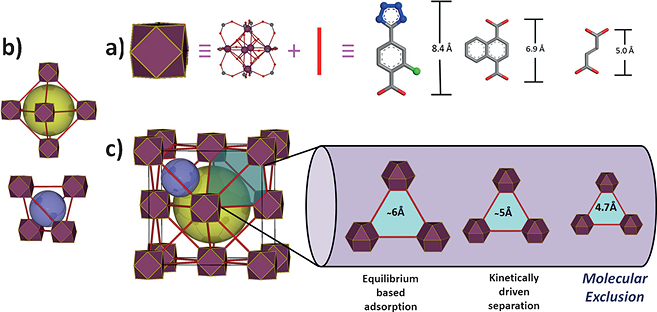

.tmb-th1050x650.png?Culture=en&sfvrsn=17643107_1)

The molecular building block (MBB) approach offers the potential to design MOFs where structural information is included into the building blocks (i.e. the organic ligands and inorganic clusters). Successful implementation of the MBB approach requires isolation of the synthetic conditions that promote the formation of a desired inorganic MBB to minimize the number of possible resulting framework topologies. Prof. Eddaoudi group seeks to leverage the knowledge that MOFs – composed of highly connected building blocks which limits the number of possible topological outcomes and thus leads to a greater degree of predictability in structure – are suitable platforms to purposely tune the resultant materials properties. Our recent work has elucidated the reaction conditions (i.e. incorporation of fluorine containing ligands or using 2-fluorobenzoic acid as a reaction modulator) necessary to promote the formation of a similar highly connected (12-connected) rare earth based hexanuclear MBB (Figure). It was shown that linking these 12-connected RE-MBBs through linear ligands results in the formation of MOFs with fcu topology. Specifically, in the hexanuclear [RE6(OH)8(O2C–)12] carboxylate-based cluster the carboxylate carbon atoms of the coordinated ligands act as points of extension and correspond to the vertices of the fcu-a net (vertex figure of the fcu net with a cuboctahedron geometry).
Related
Publications